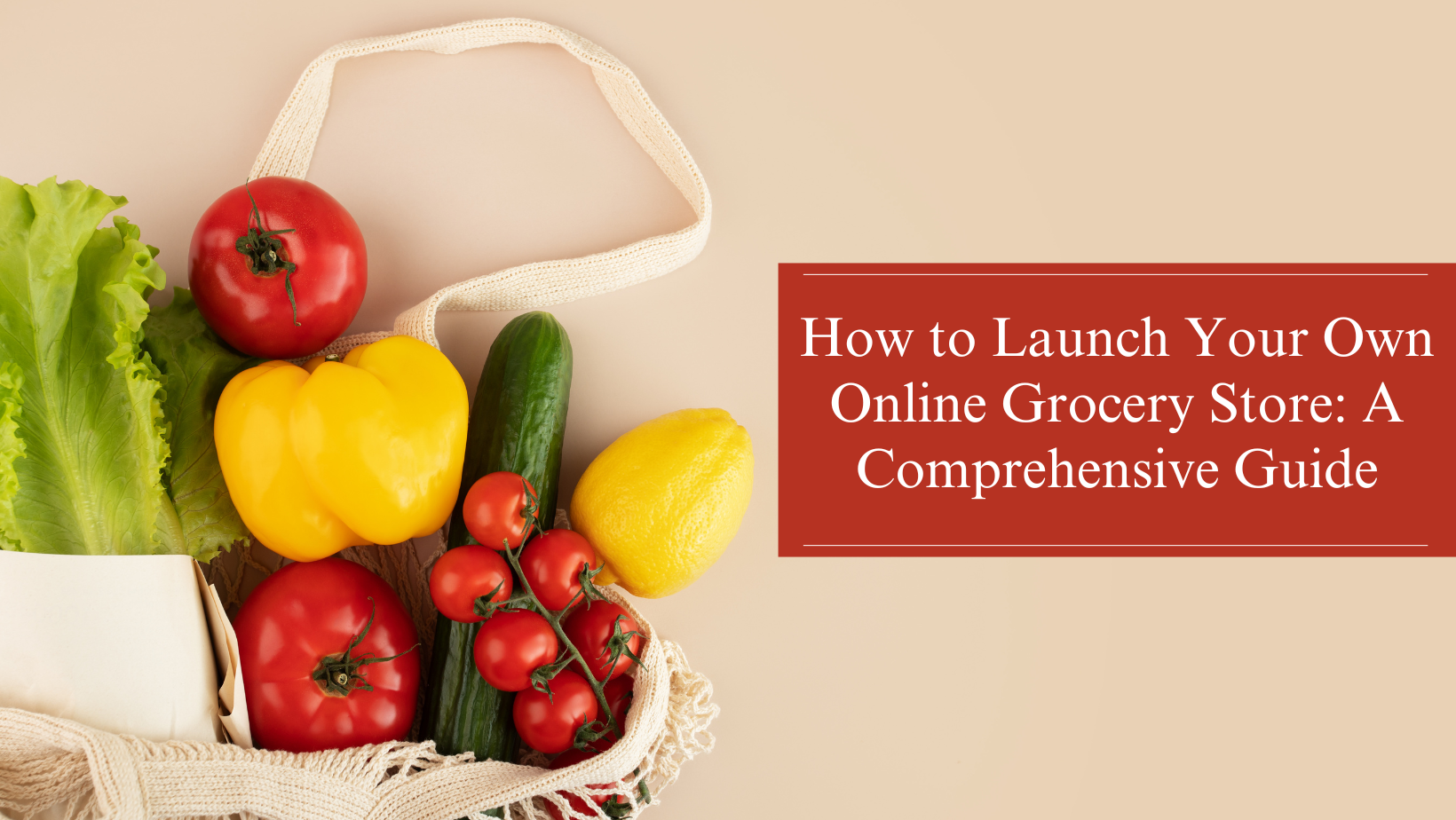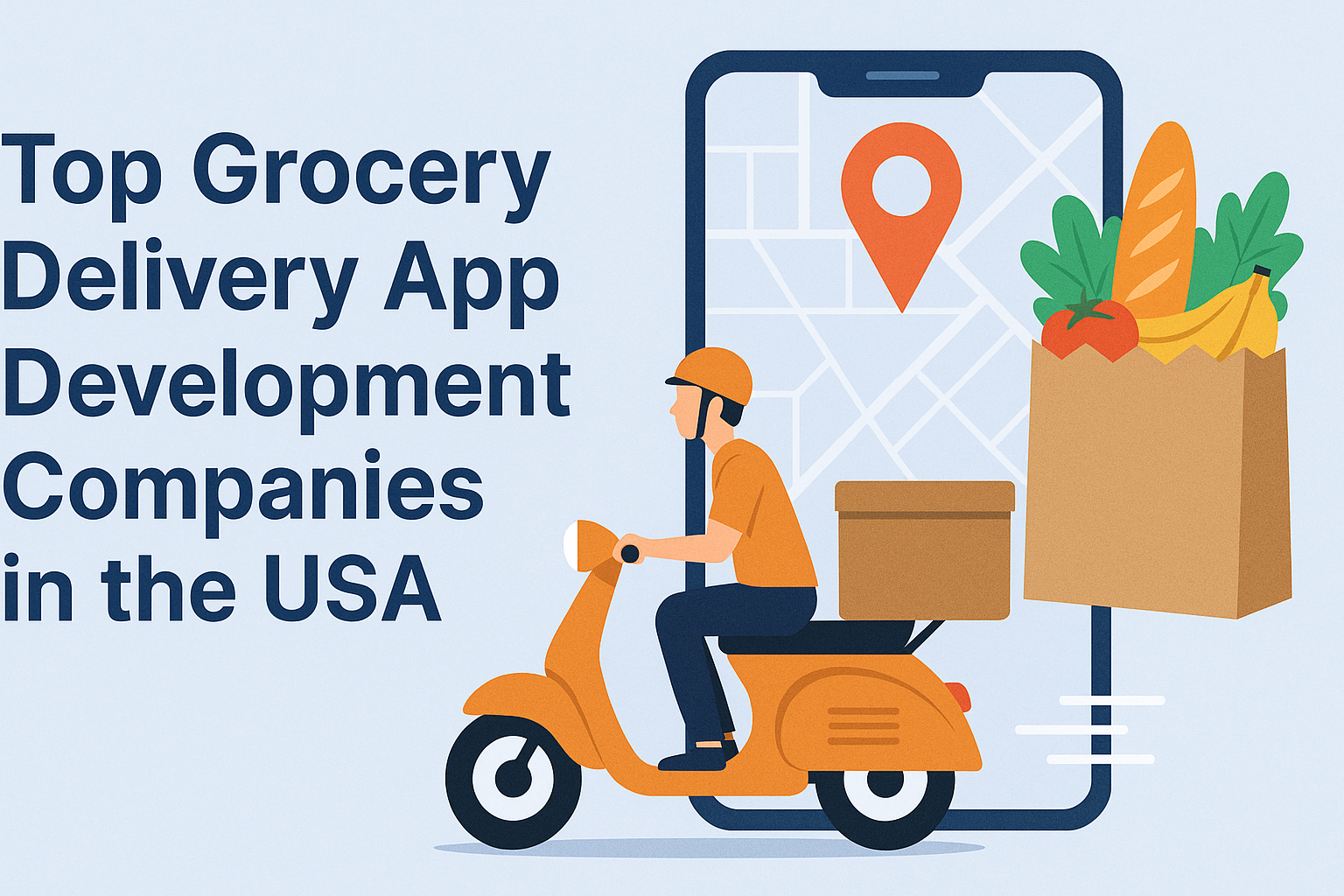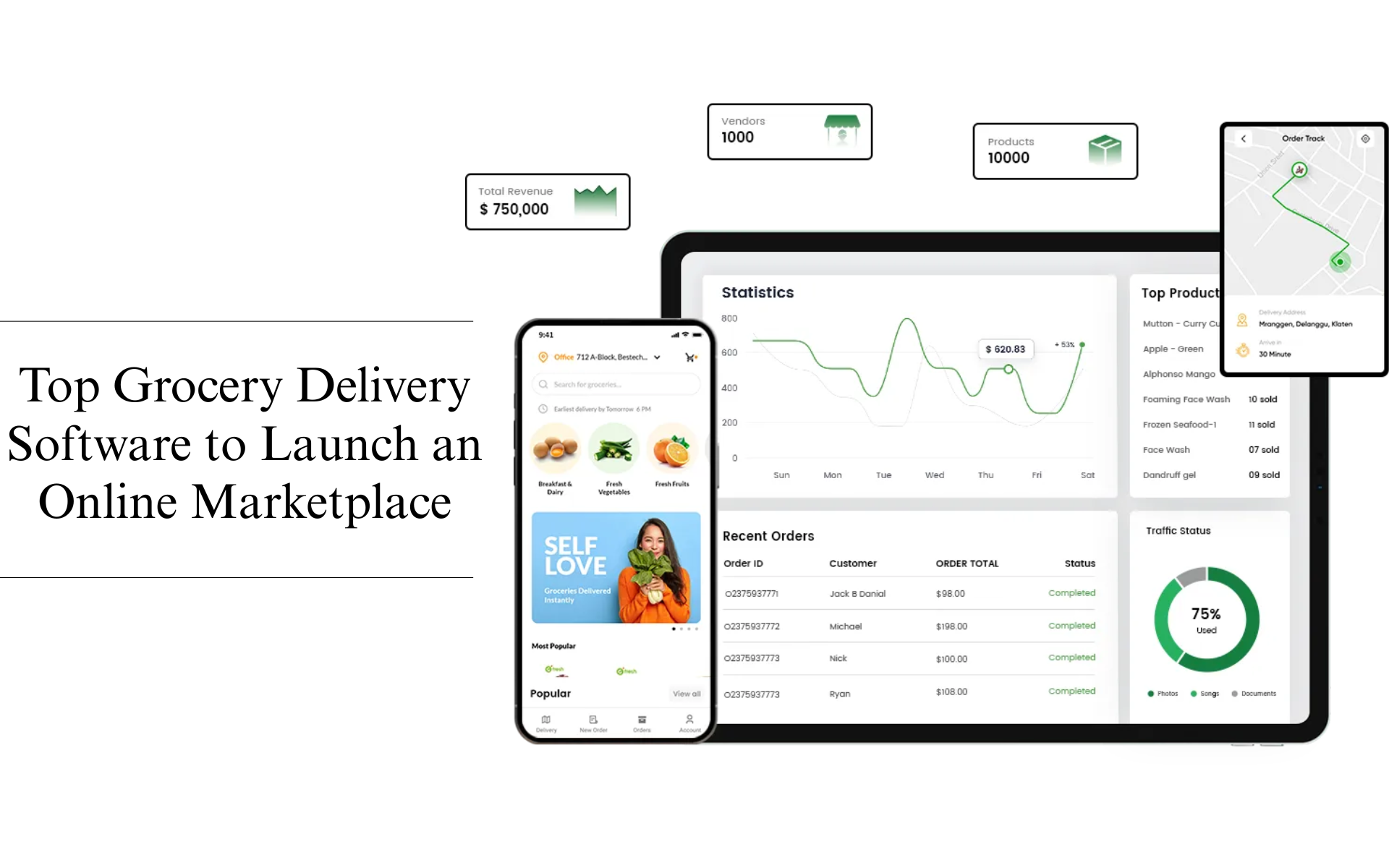How to Launch Your Own Online Grocery Store: A Comprehensive Guide

Strong 8k brings an ultra-HD IPTV experience to your living room and your pocket.
In recent years, the online grocery industry has experienced rapid growth, driven by technological innovations and changing consumer habits. With people increasingly seeking convenience and time-saving solutions in their daily routines, online grocery shopping has emerged as a popular alternative to traditional methods.
According to Statista, the global online food delivery market is projected to grow at a compound annual growth rate (CAGR) of 7.79% from 2025 to 2029, potentially reaching a market value of $1.89 trillion by 2029. This upward trend underscores the vast potential for aspiring entrepreneurs aiming to establish an online grocery store.
By implementing the right strategies and leveraging modern technology, new entrants can effectively meet the rising demand for streamlined and accessible grocery shopping experiences - while carving out a profitable niche in a high-growth sector.
What is an Online Grocery Store?
An online grocery store is a digital platform that allows consumers to purchase food and household essentials via the internet. Customers can browse a virtual catalog, select items, and choose between home delivery or in-store pickup options. This model offers the convenience of shopping from anywhere at any time, catering to the modern consumer's preference for flexibility and efficiency.
Top Players in the Grocery Industry
The online grocery landscape is dominated by several key players who have set benchmarks in service quality and operational efficiency:
- Amazon Fresh: Leveraging its vast logistics network, Amazon Fresh offers a wide range of products with rapid delivery options.
- Walmart Grocery Delivery: Combining its extensive physical store network with online services, Walmart provides same-day delivery and pickup options.
- Instacart: Partnering with various retailers, Instacart offers personal shopping services, delivering groceries in as little as an hour.
- Tesco: A leading UK retailer, Tesco has expanded its online presence, offering scheduled deliveries and click-and-collect services.
Key Features of a Successful Online Grocery Store
To thrive in the competitive online grocery market, a platform should incorporate the following features:
- User-Friendly Interface: An intuitive design that allows customers to easily navigate categories, search for products, and manage their carts enhances the shopping experience.
- Multi-Vendor & Store Management: If operating as a marketplace, this feature allows multiple sellers or local grocery stores to register, list their products, and manage sales independently while the platform handles logistics and transactions.
- Real-Time Inventory Management: Accurate stock levels prevent customer dissatisfaction due to unavailable items.
- Multiple Payment Options: Offering various payment methods, including credit/debit cards, digital wallets, and cash on delivery, caters to diverse customer preferences.
- Personalized Recommendations: Utilizing customer data to suggest products can increase sales and improve user engagement.
- Efficient Order & Delivery Management: A seamless system for processing orders, assigning deliveries, and optimizing routes helps reduce delivery times and improve customer satisfaction. Features like scheduled and express deliveries add further convenience.
- 24/7 Customer Support: Providing assistance through live chat, phone support, and FAQs ensures that customers receive prompt solutions to any issues, enhancing their overall shopping experience and trust in the platform.
- Push Notifications & Alerts: Sending timely notifications about order status, special promotions, restocked items, and personalized offers keeps customers engaged and increases app retention.
- Customer Reviews & Ratings: Allowing customers to leave feedback on products and services builds trust and transparency. High-rated products attract more buyers, while businesses can improve services based on customer insights.
Steps to Launch an Online Grocery Store
Launching an online grocery store involves careful planning and execution. Here's a comprehensive guide:
1. Define Your Target Market: Understanding your audience is paramount. Determine the demographics, preferences, and purchasing behaviors of your potential customers. This insight will guide product selection, marketing strategies, and service offerings.
2. Choose a Business Model: Selecting the right business model is crucial for operational success. Common models include:
- Multi-Vendor Marketplace: This model allows multiple vendors to sell their products on your platform, providing customers with a wide variety of choices.
- Inventory-Based Model: In this approach, the business owns and manages the inventory, offering greater control over product quality and availability.
- Hyperlocal Model: Focusing on a specific geographic area, this model partners with local stores to fulfill orders quickly, often within hours.
- Click and Collect (BOPIS): Customers order online and pick up their purchases at a designated location, combining online convenience with immediate product access.
- Scheduled Delivery Model: This model allows customers to select preferred delivery times, enhancing convenience and planning.
3. Development Approach: Building your online grocery platform requires choosing between custom development and ready-made solutions:
- Custom Development: Custom development involves building your online grocery store from scratch. While this approach offers complete control over the design and functionality of your platform, it is also time-consuming and costly. The development process involves hiring a team of developers, designers, and testers, which can significantly increase your initial investment.
- Ready-made Software: A more cost-effective and time-efficient approach is to use ready-made software solutions like Growcer. It is an online grocery software that helps entrepreneurs launch their own online grocery store quickly and efficiently. Thi software comes with pre-built features and functionalities, allowing you to focus on other aspects of your business. Growcer offers customization options to tailor the platform to your specific needs, making it an ideal solution for aspiring online grocery store owners.
Conclusion
Launching your own online grocery store presents a promising opportunity in today’s fast-paced, convenience-driven market. By thoroughly understanding your target audience, choosing the right business model, and utilizing powerful ready-made solutions like Growcer, you can establish a robust and scalable grocery delivery platform.
Success in this space requires more than just going live - it demands strategic planning, consistency, and a strong focus on customer experience. Stay updated with emerging industry trends, embrace technology that enhances operational efficiency, and remain flexible to evolving consumer behaviors.
With the right mindset and tools, your journey toward building a thriving online grocery business can lead to long-term growth and profitability.
Note: IndiBlogHub features both user-submitted and editorial content. We do not verify third-party contributions. Read our Disclaimer and Privacy Policyfor details.







